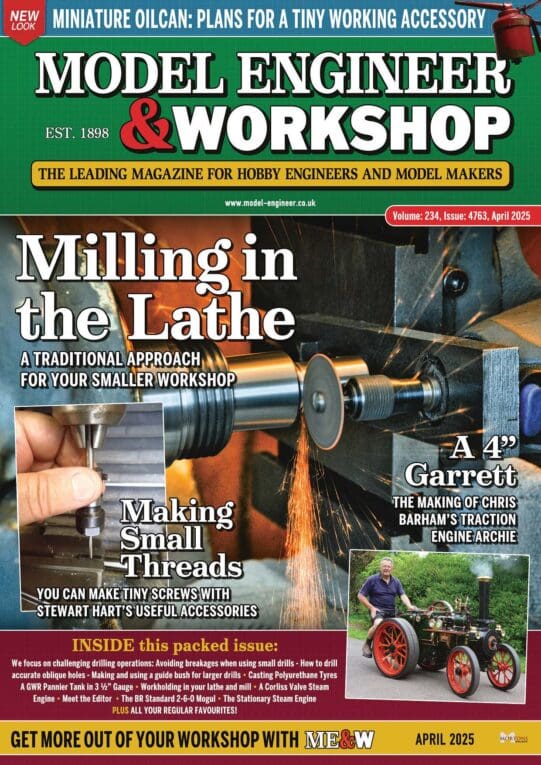Posted by Justin Thyme on 14/06/2023 07:41:00:
Just asked Bard & Chat GPT for 36mm bi metal hole saw speed in mild steel. Bard suggests 500-700 and . GPT goes for 150-200.
An internet search suggests to me 250-300
so I will need real people on an engineering forum to tell me the facts, who will also be able to add some other useful tips and not obsess about safety glasses.
Trouble is, the 'facts' depend on a lot of variables. Asked the same question, real people will come back with different numbers and unsolicited advice too.
The RPM depends on a host of variables. Which mild-steel? How powerful is the machine? How many teeth per inch? How wide are the teeth? Is the goal to cut metal as fast as possible, or to maximise cutter life? Most recommended speeds come from industry, who go for best financial return on tool-cost, power-consumption, tool-life, and production rate. They tend to push tools much harder than Model Engineers, and would only expect a hole saw to do about 6 hours work before scrapping it. Tools last a lot longer at the rate I cut metal, but I sometimes work in a tearing hurry. Last time I cut a hole in a galvanised water tank, it was in a cramped stinking-hot midsummer loft; so unpleasant I didn't care how long the saw lasted! I wanted out, and flogged my electric drill and hole saw to get the hole cut asap.
The way questions are asked alters how they are answered. Chaps who have to ask this question on the web probably don't know about H&S either! Better safe than sorry, which is why safety glasses and other precautions are often mentioned. An AI picks up that Safety Glasses are often mentioned in answers, so it mentions them too. It's not wrong!
My answer? For almost everything, RPM = 10000/diameter in millimetres.
Smarter than it appears, the sum gives a satisfactory answer for cutting mild-steel with HSS. Other metals can be inferred from the mild-steel result, for example divide rpm by 5 for hard Cast-Iron, and multiply by 5 for Aluminium. Double, triple or even more RPM if the cutter is carbide.
Not gospel – it's a simple calculation used to get close to a speed that will work, and the operator should always expect to experiment. Having started a cut at the guesstimated formula speed, I adjust feed-rate until the machine sounds as if it's working moderately hard and/or the finish is OK. Rarely necessary to change RPM as well, but it does happen. Cutter shape, power, and machine rigidity all make a difference. If I have to look up cutting speed for something unusual, like depleted Uranium, I apply the same logic – only using the recommended cutting speed as a starting point. I always experiment to suit my equipment and needs.
My approach wouldn't satisfy a production engineer: they'd do it properly. I almost always cut slower than book speed, which would bankrupt a manufacturer! Fortunately, unless time-is-money, cutting speed is rarely critical – I find machinable metals cut reasonably well over a wide range of speeds. A lot of experimenting may be needed to cut nasty metals like work-hardening stainless steel. The best way to deal with fussy metals is to avoid them!
Dave
Ches Green UK.




